A Photographer’s Literary Quest to Find the Bird That Inspired Dickens and Poe
The Beaux-Arts exterior of the Parkway Central Library location of the Free Library of Philadelphia. (All Photos: Josh Cogan)
This photo essay is one of a five-part series with Atlas Obscura and Olympus. We asked some of our favorite photographers to take a quest with Olympus cameras, and these are the results of their adventures. All photographs in this story were taken with an Olympus OM-D E-M10 Mark II with a M.Zuiko ED 14-42mm F3.5-5.6 EZ. To see the full series, go here.
In 1841, Charles Dickens’ beloved pet raven Grip died. Dickens had immortalized the bird in his book Barnaby Rudge but in his death, took it a step further. Grip was taxidermied and preserved inside a glass box, which Dickens kept until his own death.
Grip’s literary heritage doesn’t stop there, though. He is thought to have inspired Edgar Allen Poe’s The Raven. Fittingly, after being dead for nearly 180 years, today Grip lives in the refined atmosphere of the Rare Books Room at the Free Library of Philadelphia.
Photographer Josh Cogan undertook this very literary quest to find Grip in early January. In the fifth and final part of the Atlas Obscura/Olympus series, peek into Cogan’s journey among the hushed, book-lined walls of the Free Library of Philadelphia.
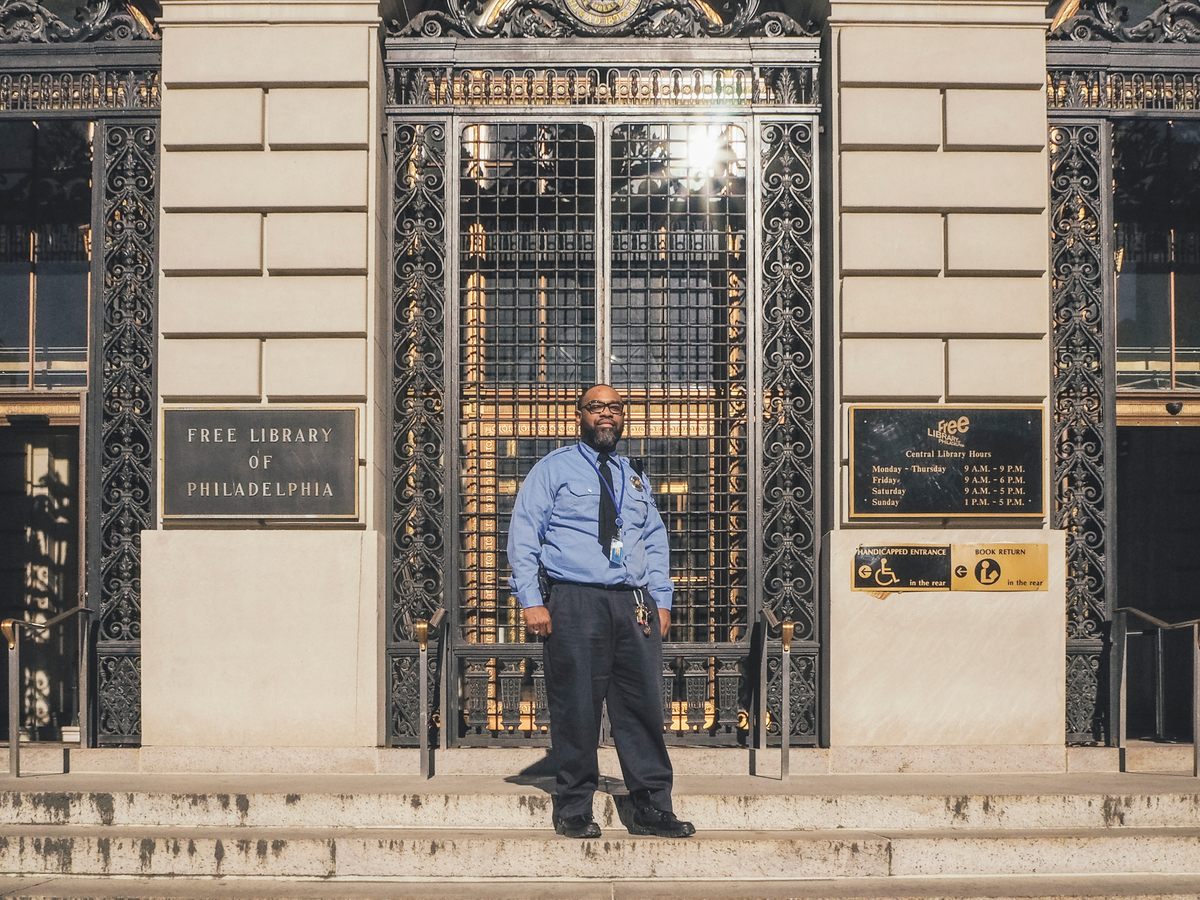
A security guard stands watch. The library is home to more than 7 million items and since its inception, the mission has been to “advance literacy, guide learning, and inspire curiosity.”
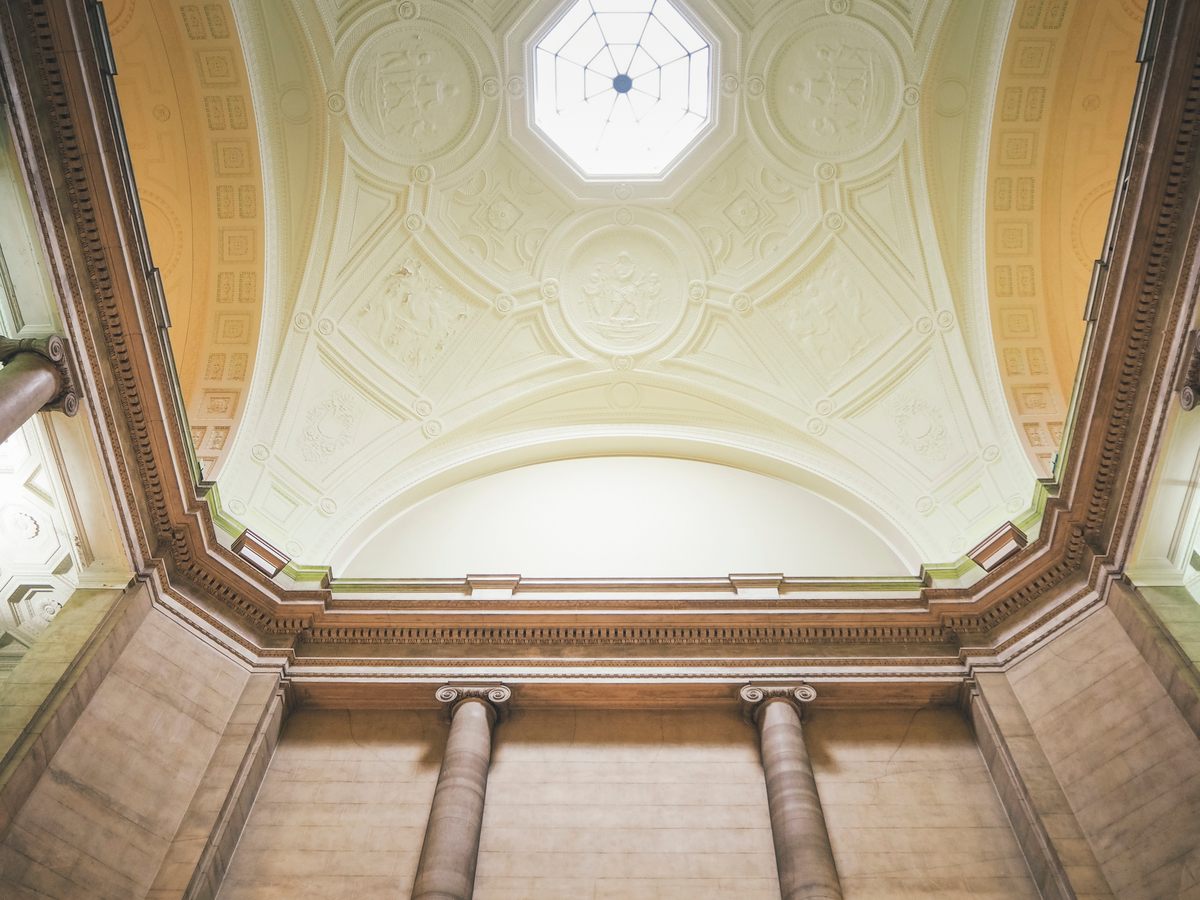
Inside the library, which was designed by architect Julian Abele under the mentorship of Horace Trumbauer.

One of the biggest draws of the Parkway Central branch is the rare books collection, which is one of the largest in the country. 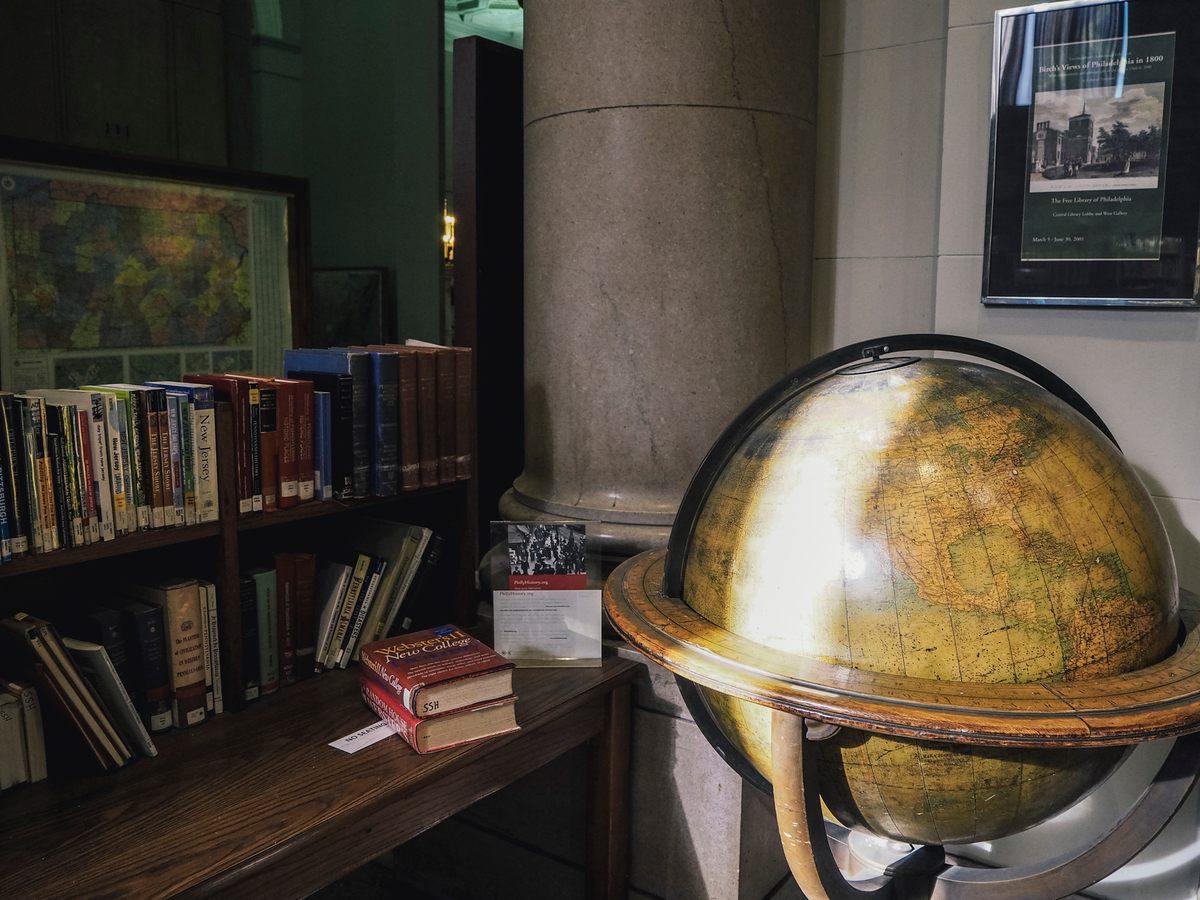
In addition to books, the library is also home to items such as maps and globes, such as this one which is believed to have been created around 1910.
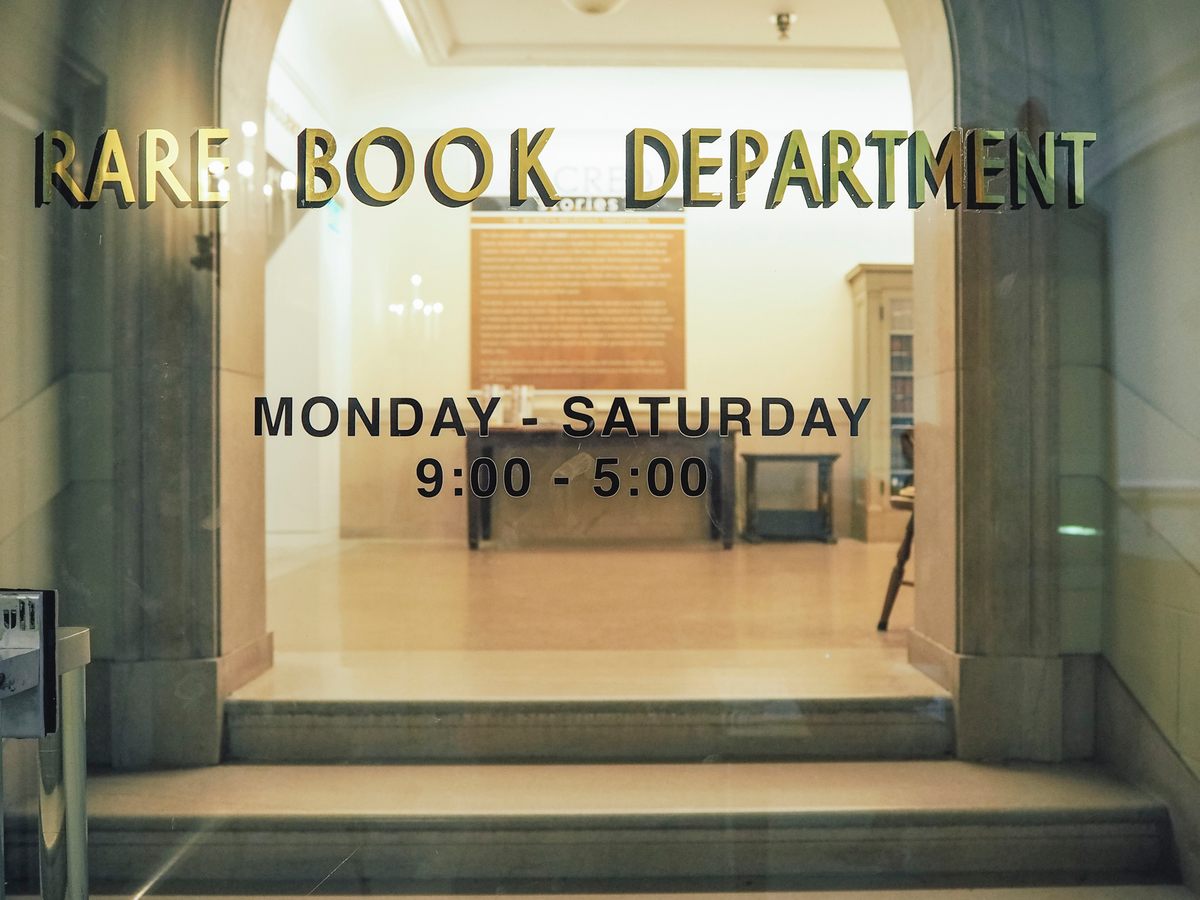
The rare books department first began in 1899 with the gift of the Copinger-Widener Collection of Incunabula - books printed before 1501. In the years to follow, several more donors added to the collection.

The rare books collection contain innumerable works from around the world. One of the stand out pieces is this Buddhist illuminated manuscript, Kammavaca, c.1800-1900.
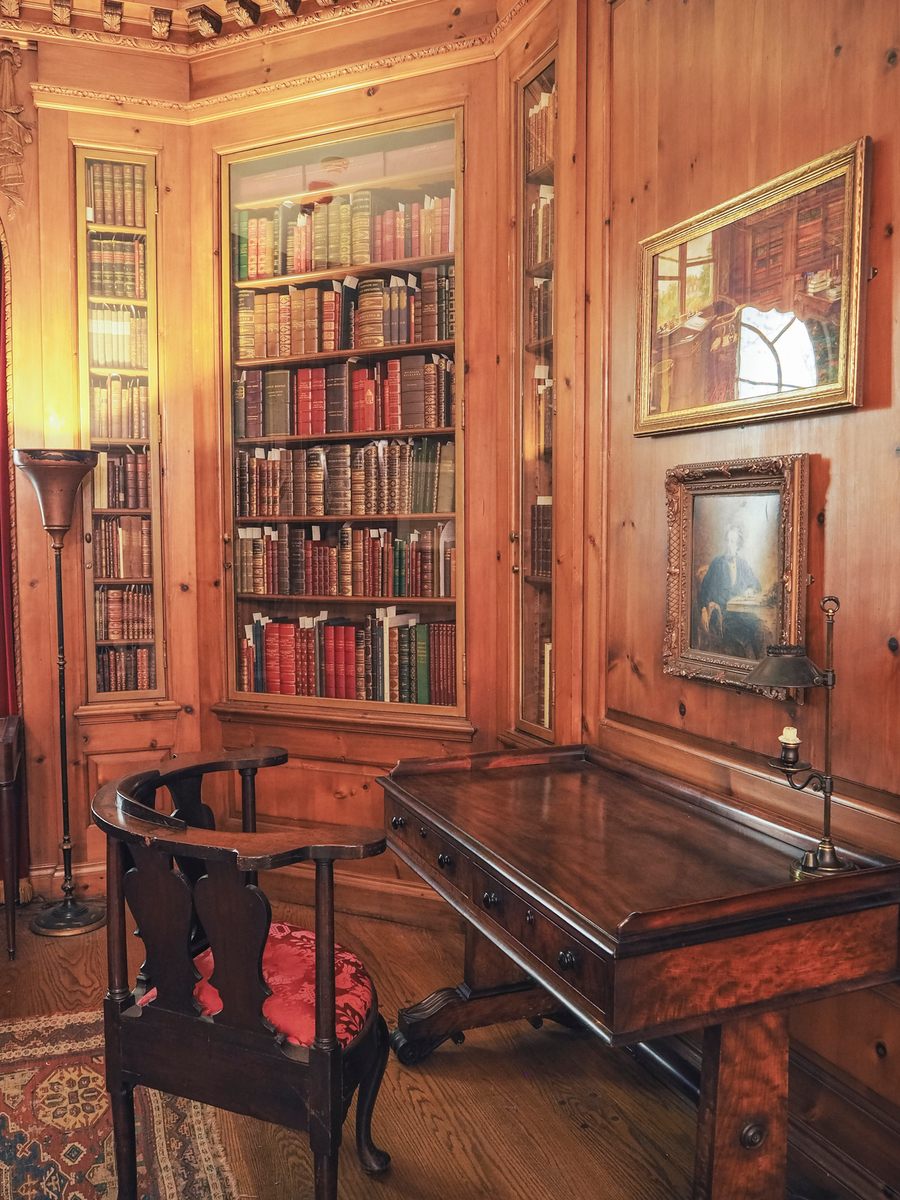
Upon his death in 1947, William McIntire Elkins bequested his library to the Philadelphia Free Library. Over the course of the next two years, his entire collection - including the furnishings - was transferred to the third floor of the library. Included in his gift was a desk used by Charles Dickens. If you look closely you can find his initials carved into the top of the desk.
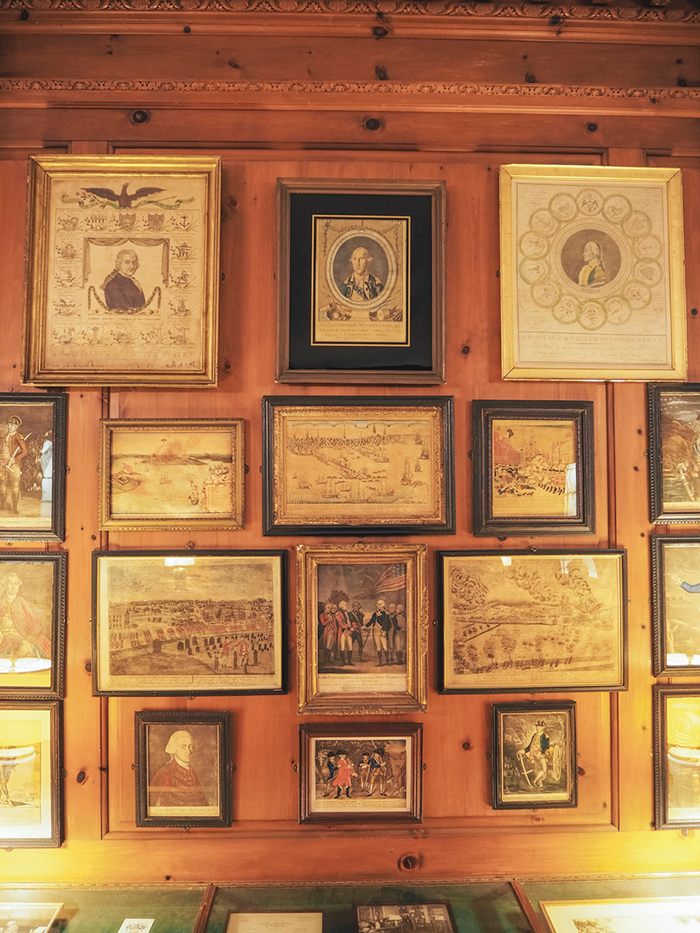
Wall hangings in the rare books room. Elkins’ donation included a request that his furnishings be assembled as they were in his home.
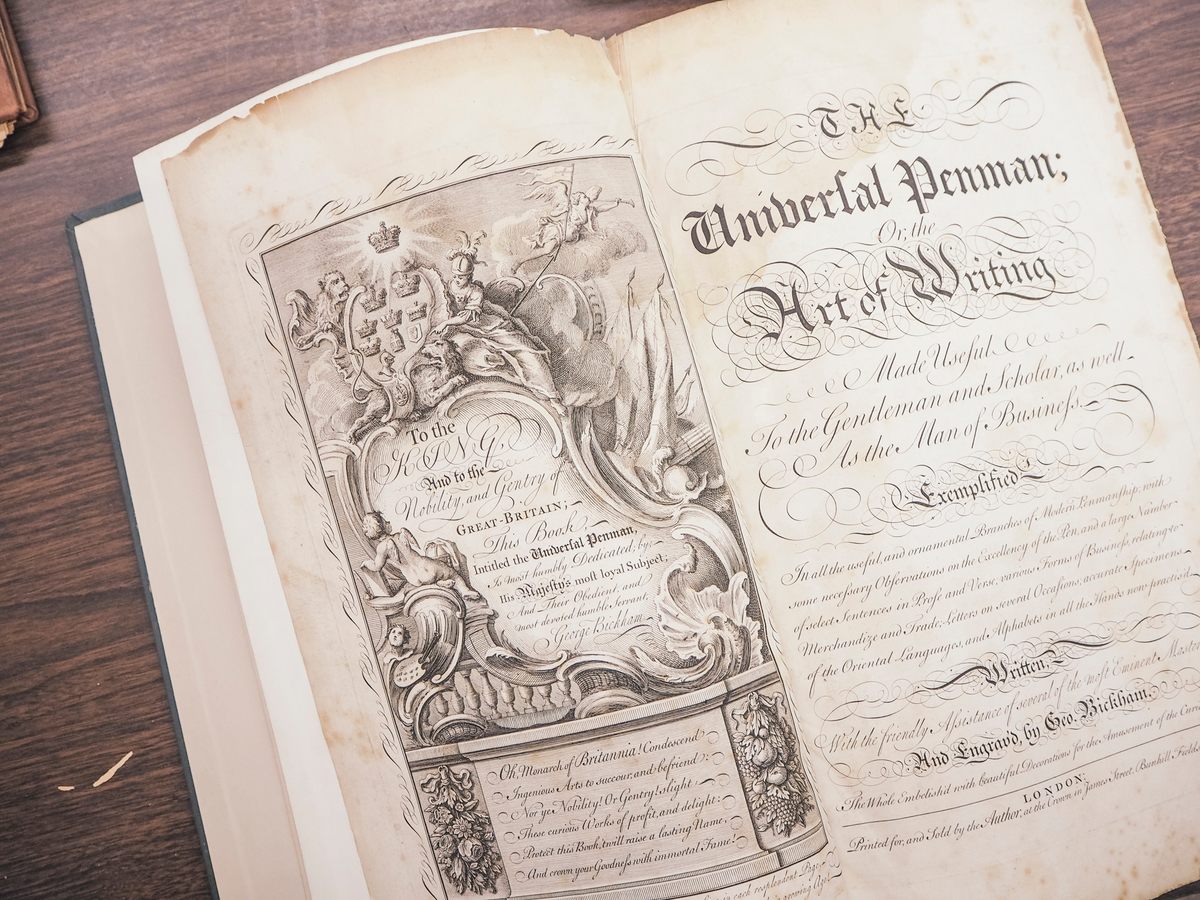
The elaborately illustrated title page of The Universal Penman; or the Art of Writing, c.1741-1473. The rare books collection can be viewed and handled by anyone who makes a request to do so.
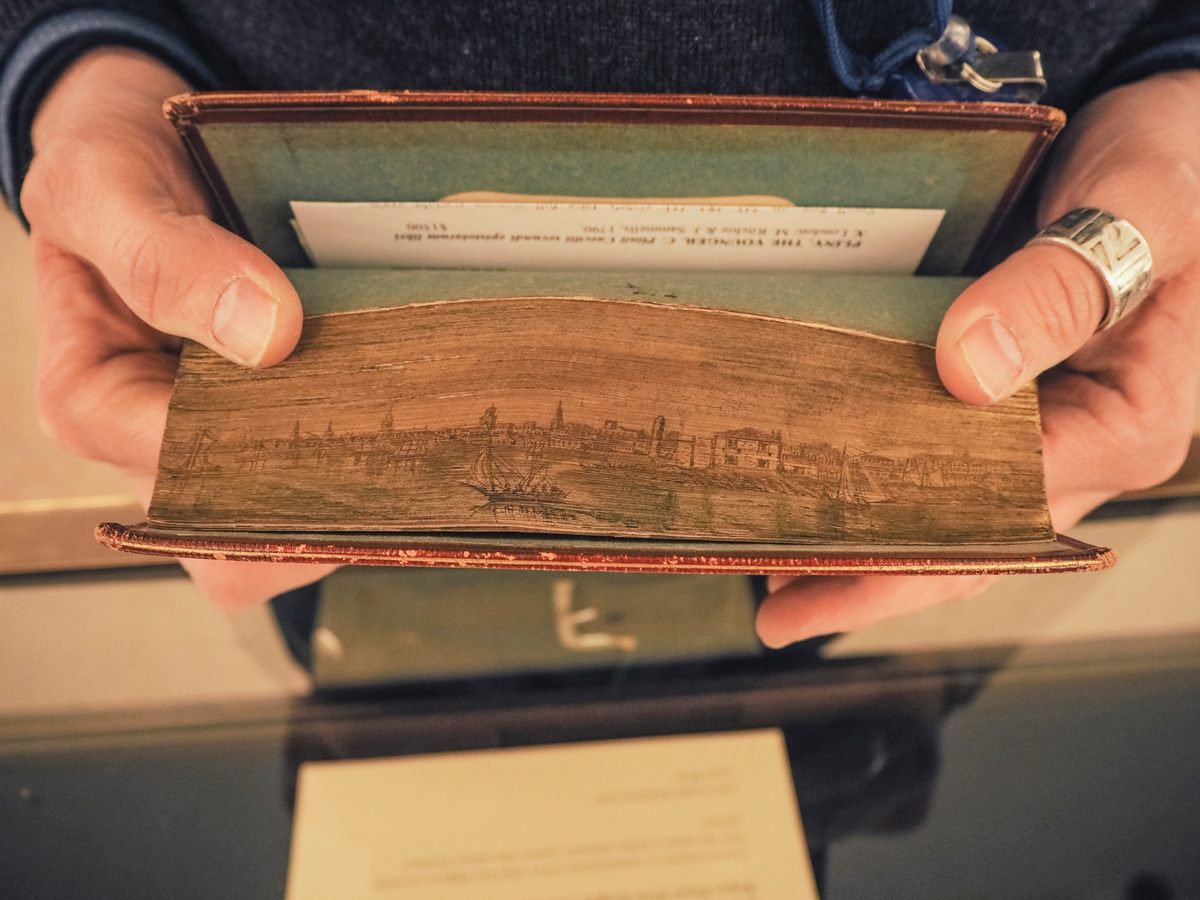
The books in the rare collection are as much works of art as they are learning tools. In this case quite literally - this appears to be a standard book until the pages are spayed in a certain manner, and a scene emerges. Known as fore-edge painting, this 1790 edition of Pliny the Younger shows a Rhode Island harbor scene.
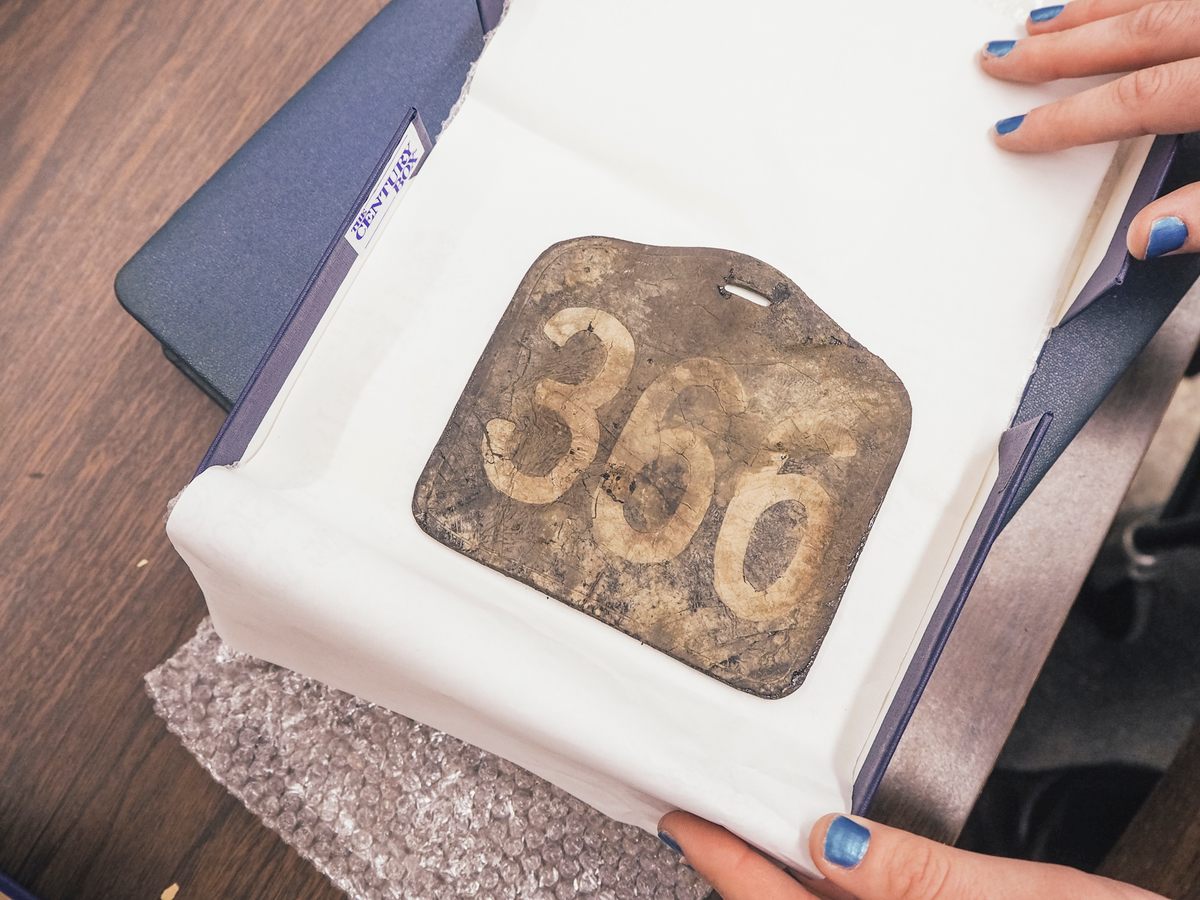
In addition to books and maps the collection also contains numerous other rare objects such as this license plate, one of the first ever created in the United States.
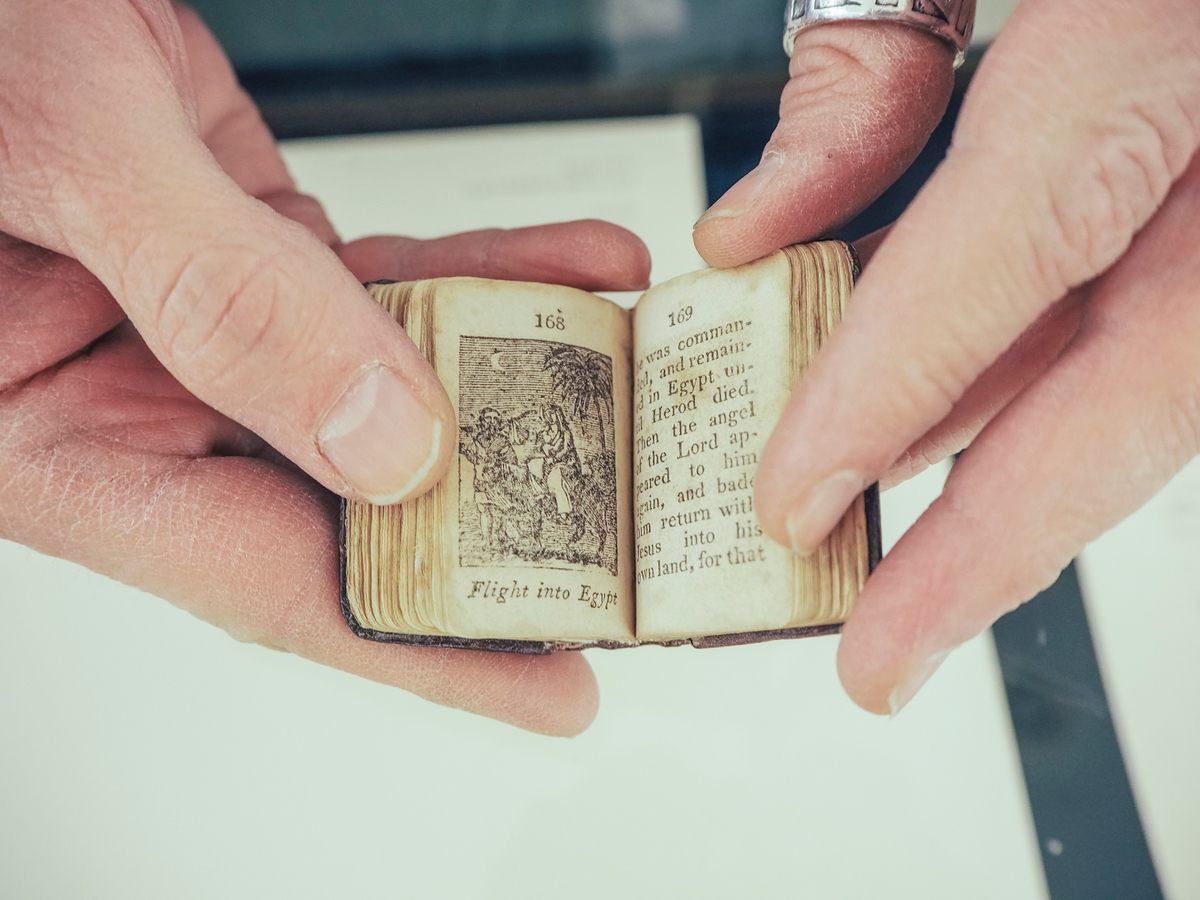
The books in the collection range from big to small, the tiniest of which is a thumb bible first published in 1886. Tiny bibles were first used as gift for children, but soon, due to their curious nature, found a wider audience with adults.
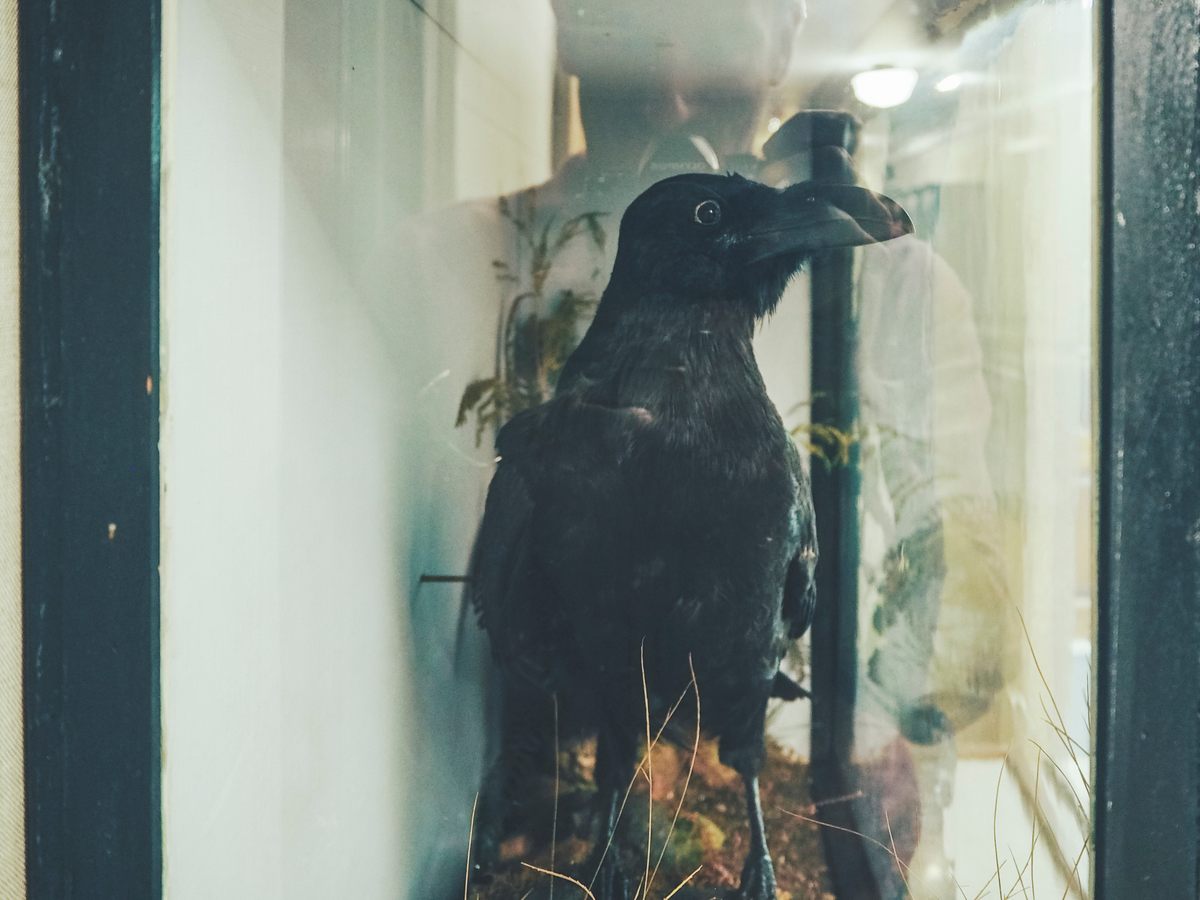
A most literary bird: the final resting place of Charles Dickens’ pet raven Grip.






Follow us on Twitter to get the latest on the world's hidden wonders.
Like us on Facebook to get the latest on the world's hidden wonders.
Follow us on Twitter Like us on Facebook